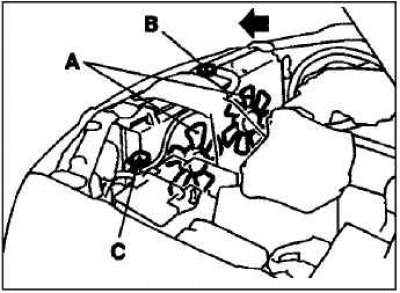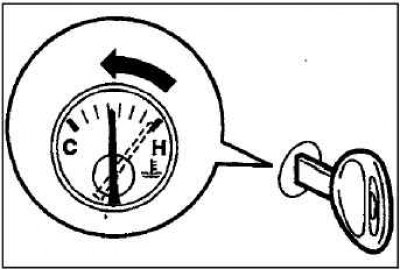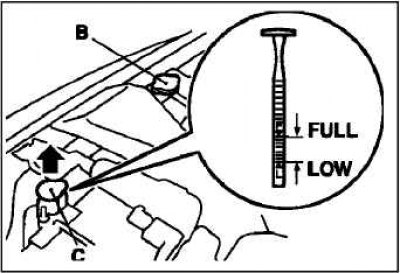
A is the cooling fan.
B - radiator cap.
C - expansion tank.
If for a long time the arrow of the coolant temperature gauge is in the overheating zone, then this indicates an overheating of the engine. In such a case, take the following measures.
Stop the car in a safe place.
With the engine running, raise the hood to ventilate the engine compartment.
Attention! Be careful when opening the hood as boiling coolant may be released. The hood support rod can also be very hot.

Beware of hot steam that may come out from under the expansion tank cap.
Do not open the radiator cap while the engine is hot.
After the coolant temperature has returned to normal, stop the engine.

Check the coolant level in the expansion tank. If there is no fluid in the reservoir, wait until the engine has cooled down before opening the radiator cap. Otherwise, hot steam or boiling liquid may escape from the radiator filler neck.
Add coolant to the radiator and/or expansion tank if necessary.
Attention! Quick filling of cold water (coolant), when the engine is still warm may cause cracks in the cylinder head and/or cylinder block. So add water (coolant) small portions with the engine running.
Check the radiator hoses for coolant leaks and the fan drive belt for loose tension or damage. In the event of any malfunction in the cooling system or damage to the fan drive belt, contact an authorized MITSUBISHI dealer for troubleshooting.
